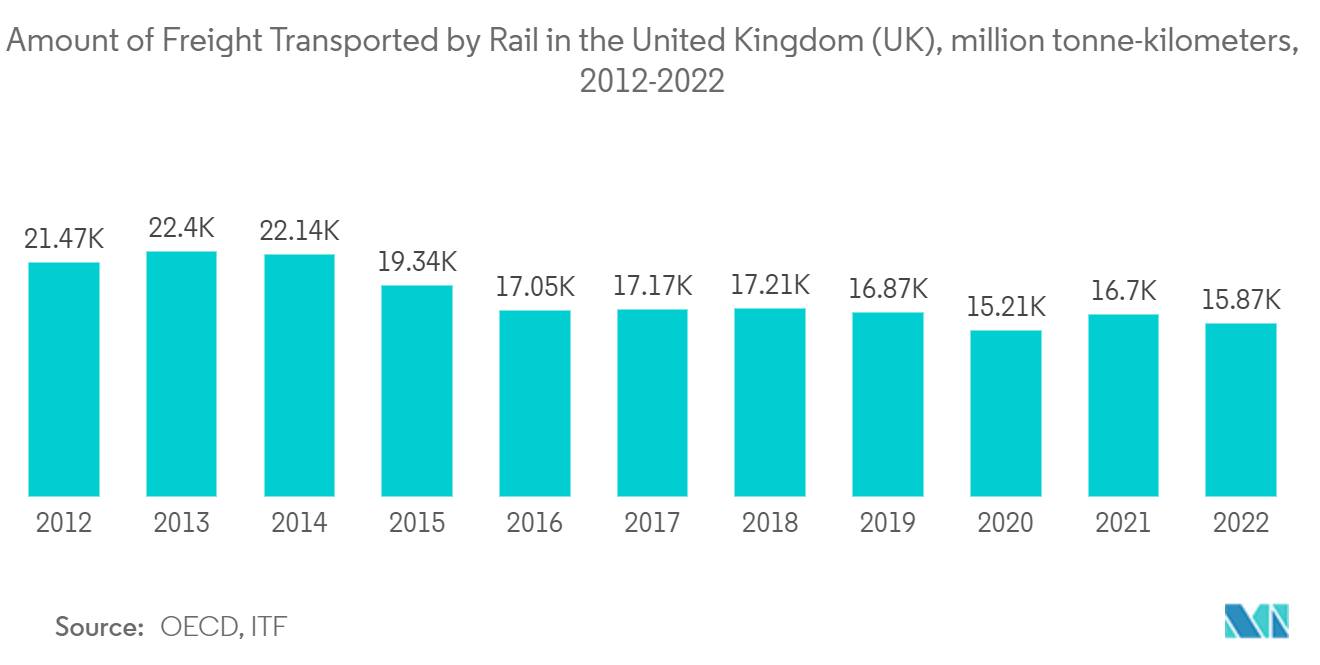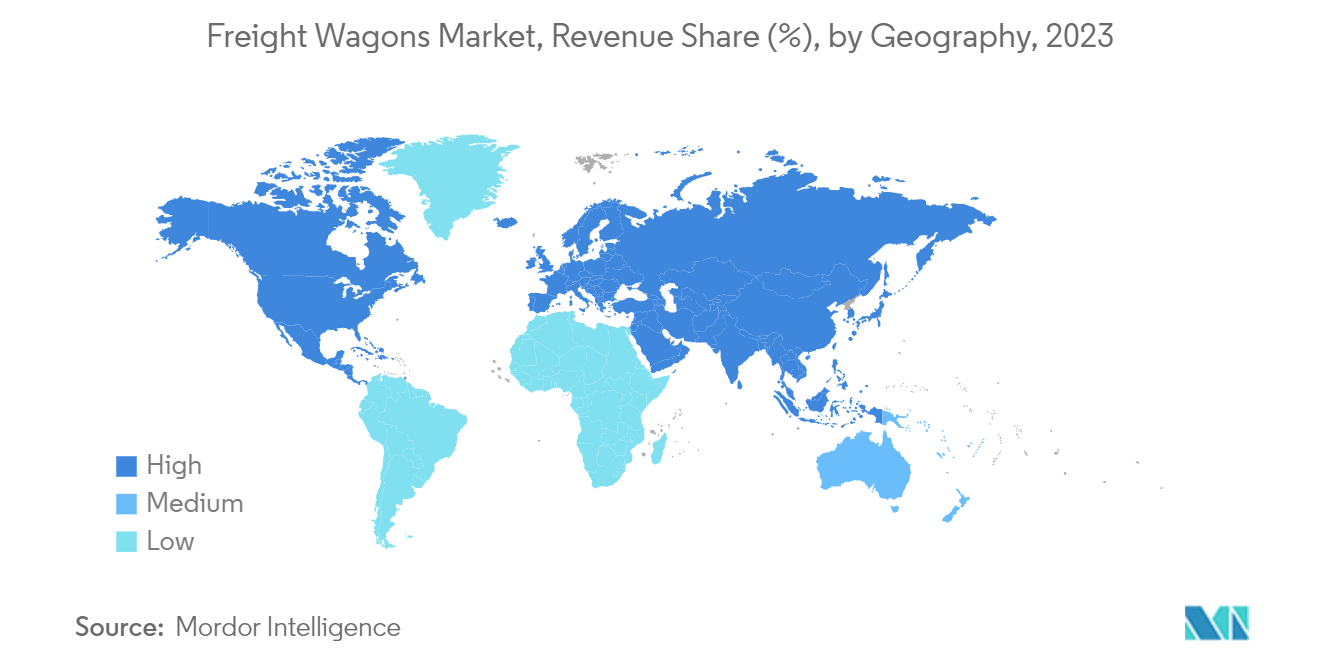Market Trends of Freight Wagons Industry
Hopper Wagons are the Largest Segment Owing to Their Versatility
Hopper wagons are the largest wagon type in the freight wagon market due to their versatility, efficiency, and widespread use across various industries. These wagons are specifically designed to transport bulk commodities such as coal, ore, grains, and aggregates, making them indispensable in mining, agriculture, construction, and energy sectors.
The design of hopper wagons allows for easy loading and unloading of bulk cargo through openings at the bottom of the wagon, known as hoppers. This enables rapid and convenient loading and unloading processes, minimizing turnaround times and enhancing overall productivity. As a result, hopper wagons are preferred for transporting bulk commodities over long distances, contributing significantly to the efficiency of supply chains in various industries. For instance,
• In December 2023, Ukrzaliznytsia (UZ), the state railway company of Ukraine, unveiled its first domestically-built grain wagon, specifically designed to operate seamlessly on both the 1,520 mm track gauge used within Ukraine and the 1,435 mm standard track prevalent in the European Union. This innovative hopper wagon, designated as model 19-8005-U, is purpose-built for transporting grain and other bulk food cargo. The wagon can carry up to 70 tons of cargo and is designed to travel at a maximum speed of 120 km/h.
According to the Association of American Railroads (AAR), hopper wagons accounted for a significant portion of rail freight traffic in the United States, particularly in agriculture, where they transport grains, fertilizers, and other agricultural products. Similarly, in Australia, hopper wagons are widely utilized in the mining industry to transport bulk materials such as iron ore, coal, and minerals from mines to processing plants and ports for export.
Furthermore, technological advancements have further enhanced the capabilities of hopper wagons, making them more efficient and cost-effective. Modern hopper wagons have advanced features such as automated loading and unloading systems, telemetry sensors for monitoring cargo levels and conditions, and improved braking systems for enhanced safety and control. These innovations have further solidified the position of hopper wagons as the leading wagon type in the freight wagon market.

Asia Pacific Will be the Fastest Growing Region During the Forecast Period
Asia-Pacific is emerging as the fastest-growing region in the freight wagon market due to several key factors driving the expansion of rail freight transport and the demand for freight wagons in the region.
Rapid industrialization and urbanization across Asia Pacific countries like China, Japan, and India have led to increased demand for goods and commodities transportation. As economies in the region continue to grow, there is a growing need for efficient and cost-effective logistics solutions to support industries such as manufacturing, construction, and agriculture. With its ability to handle large volumes of freight over long distances, rail transport is becoming increasingly important in meeting this demand.
Additionally, initiatives such as China's Belt and Road Initiative (BRI) aim to improve connectivity and trade between Asia, Europe, and Africa through investments in transportation infrastructure, including railways. The BRI has led to significant investments in rail infrastructure and rolling stock across Asia Pacific countries, driving the demand for freight wagons in the region. For example, China Railway Corporation, the state-owned railway operator in China, has been expanding its fleet of freight wagons to accommodate the growing freight volumes associated with the BRI projects.
Furthermore, environmental concerns and sustainability initiatives are also driving the growth of rail freight transport in Asia-Pacific. As countries in the region struggle with issues such as air pollution and greenhouse gas emissions, there is a growing emphasis on shifting freight transport from road to rail, which is considered a more environmentally friendly mode of transportation. This shift is supported by government policies and regulations promoting rail freight transport and investments in rail infrastructure, contributing to the increasing demand for freight wagons in Asia Pacific.
Overall, with continued investments in rail infrastructure and ongoing industrialization, Asia Pacific is expected to remain the fastest-growing global freight wagon market region during the forecast period.


